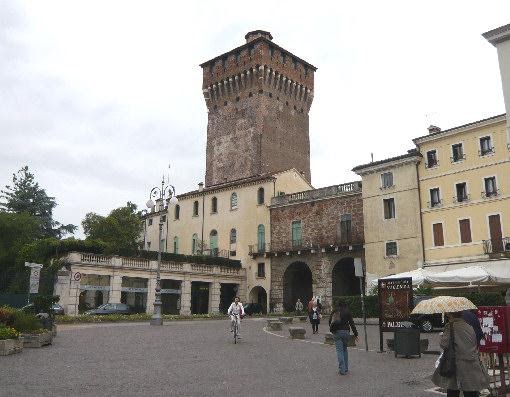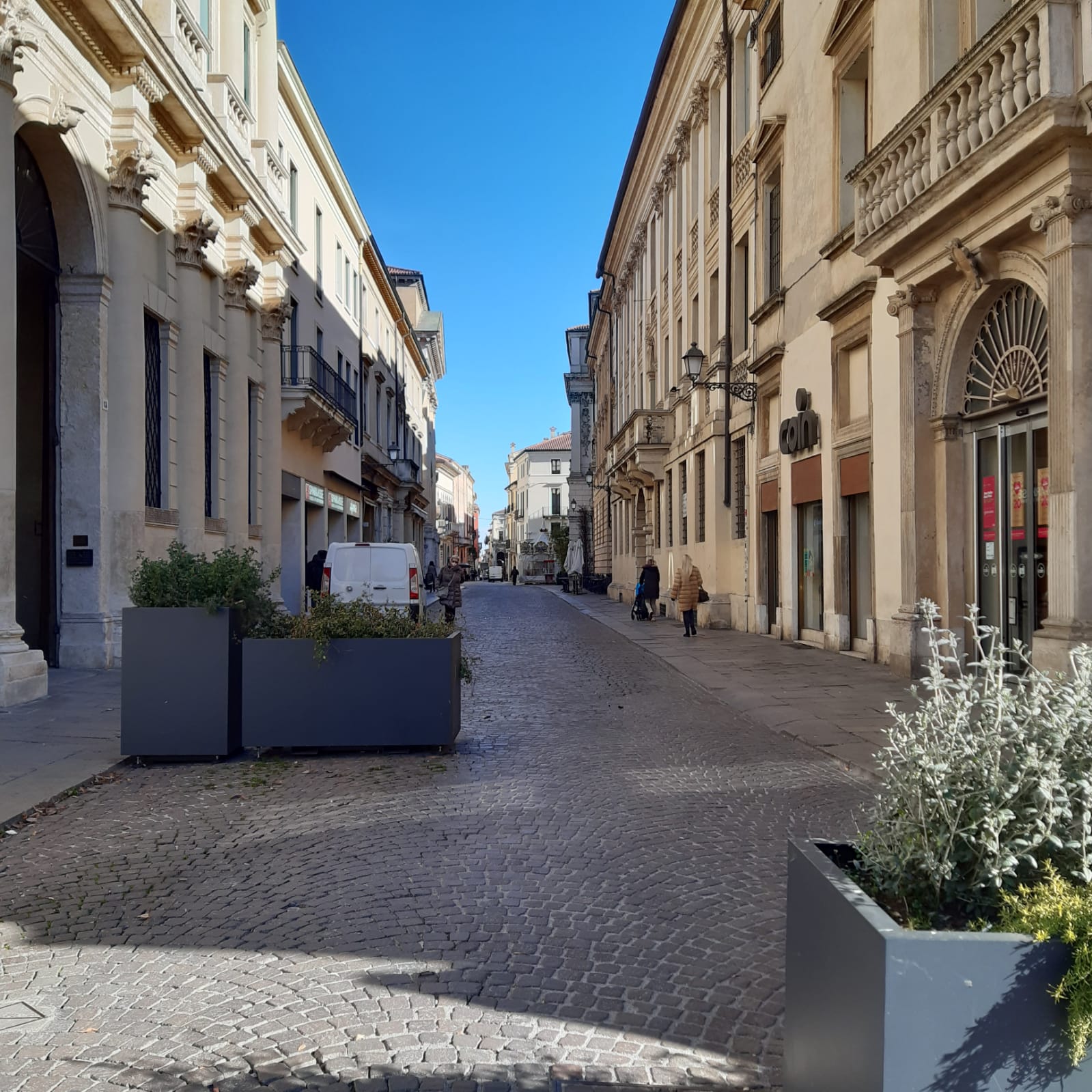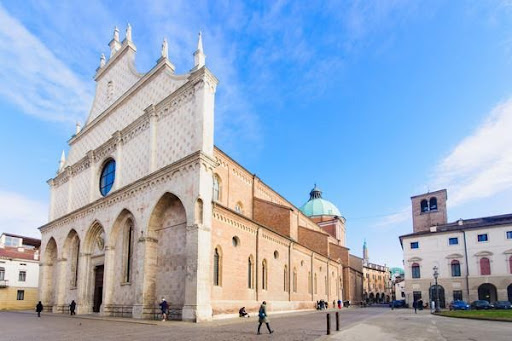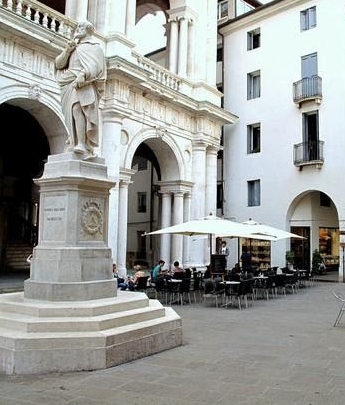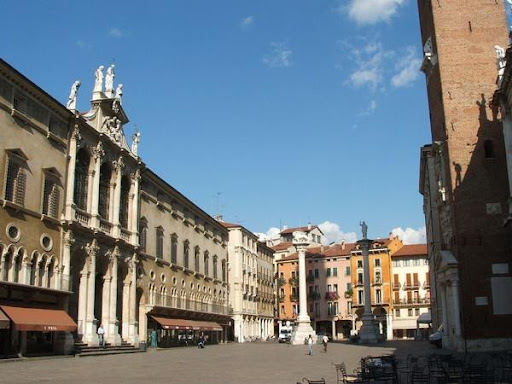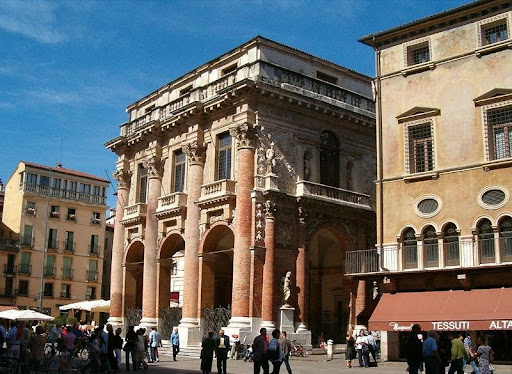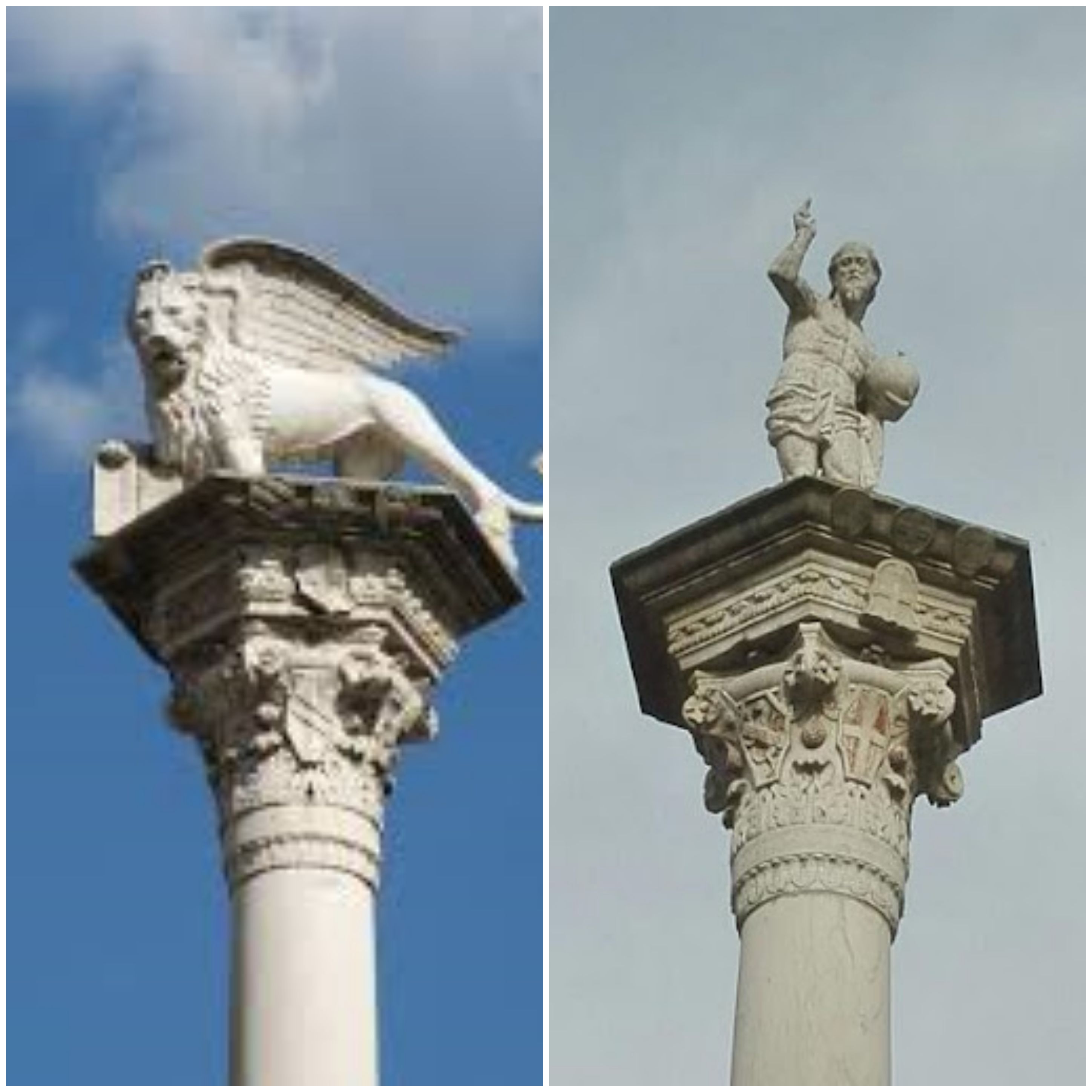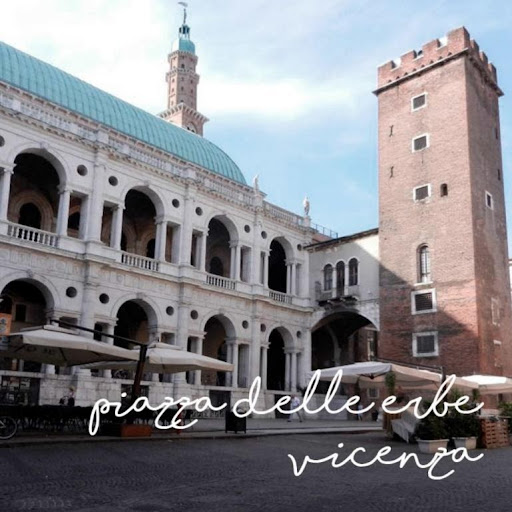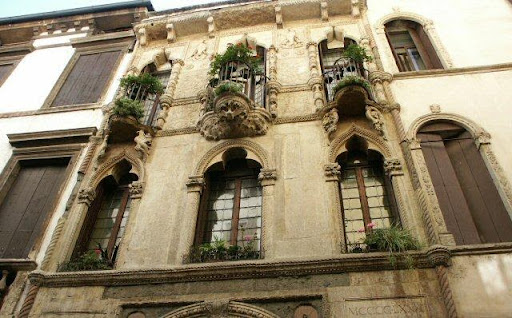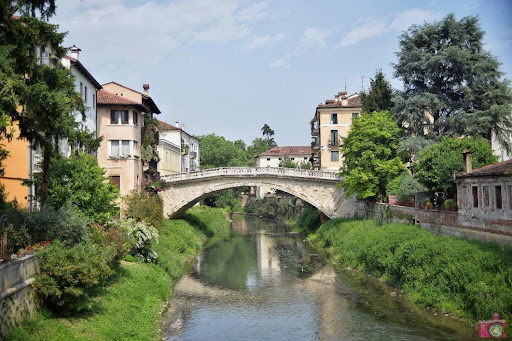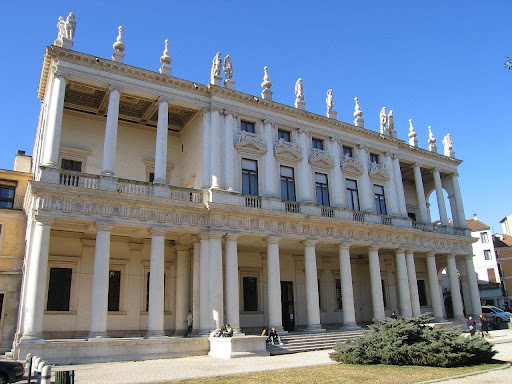Gli studenti stranieri del Cpia (Centro per l’Istruzione degli Adulti) dove insegno, hanno scritto questo diario di una visita in giornata a Vicenza. Il compito di noi insegnanti è stato di aiutarli nella stesura dei testi in lingua italiana ed inglese, mentre loro si sono dimostrati degli ottimi fotografi, catturando questa città in tutta la sua bellezza.
The foreign students of the CPIA (Centre for Adult Education) where I teach, wrote this journal on a one day visit to Vicenza; our task as teachers was to help them write the texts in Italian and English, and they proved to be excellent photographers, capturing this city in all its beauty.
Venerdì 3 dicembre siamo andati a visitare il centro storico di Vicenza, la città dove veniamo a scuola. Abbiamo visto diversi monumenti interessanti dal punto di vista storico ed artistico.
On Friday 3 December we visited the old town of Vicenza, the city where we come to school. We saw several interesting monuments from a historical and artistic point of view.
Vicenza è una cittadina situata nella parte nord orientale del Veneto, famosa in tutta Italia come la città del Palladio. Andrea Palladio è un grande architetto del 1500 che ha lavorato molto a Vicenza: grazie a lui la città è diventata bellissima. Prima i palazzi e le case erano color marrone, con i mattoni, lui invece ha progettato grandi edifici bianchi che ammiriamo ancora oggi. Palladio era andato anche a Roma per studiare gli antichi templi romani e ha studiato anche i templi degli antichi greci. Andrea Palladio è l’architetto più copiato al mondo.
Vicenza is a town in the North East of Veneto, famous all over Italy as the city of Palladio. Andrea Palladio is a great architect of the 1500s who worked a lot in Vicenza: thanks to him the city has become beautiful. Before the buildings and houses were brown, with bricks, but he designed large white buildings we still admire today. Palladio was also in Rome to study ancient Roman temples and also studied the temples of the ancient Greeks. Andrea Palladio is the most copied architect in the world.
Grazie al suo grande patrimonio artistico, la città di Vicenza nel 1994 fu riconosciuta come Sito Mondiale dell’Unesco.
Thanks to its great artistic heritage, the city of Vicenza in 1994 was recognized as a Unesco World Site.
Adesso vi raccontiamo i luoghi ed i monumenti che abbiamo visto, così non dimentichiamo.
Now we’ll tell you about the places and monuments we saw, so that we won’t forget.
La visita è iniziata da viale Roma, la via che dalla stazione dei treni conduce verso il centro storico. Qui c’è un busto del Mahatma Gandhi, grande politico indiano che ha aiutato il suo Paese a diventare indipendente dalla Gran Bretagna nel 1947. Gandhi non ha usato la violenza per fare politica, infatti è ricordato come uomo della non violenza e maestro della pace.
The visit started from viale Roma, the road that leads from the train station to the town centre. Here is a bust of Mahatma Gandhi, a great Indian politician who helped his country to become independent from Great Britain in 1947. Gandhi did not use violence to engage in politics, in fact he is remembered as a man of non-violence and a master of peace.
Porta Castello è una porta di accesso alla città. La grande torre che si vede si chiama torrione: era la torre centrale del castello che c’era nel XII secolo. Come vedete dalla foto, il cielo nella prima mattinata era un po’ grigio, ma presto le nuvole hanno ceduto il posto ad un bel sole!
Porta Castello is a gateway to the city. The large tower that can be seen is called the keep: it was the central tower of the castle that was there in the 12th century. As you can see from the photo, the sky in the early morning was a bit gray, but soon the clouds gave way to a beautiful sun!
Corso Palladio è la via principale che attraversa il centro storico da Porta Castello a Piazza Matteotti; è stata intitolata al celebre architetto dopo la seconda guerra mondiale. Il Corso è caratterizzato da eleganti palazzi; sulla sinistra si vede uno scorcio di Palazzo Thiene Bonin Longare, sede dell’Associazione Industriali.
Corso Palladio is the main street that crosses the old town from Porta Castello to Piazza Matteotti; it was named after the famous architect after the Second World War. The street is characterized by elegant buildings; on the left you can see a glimpse of Palazzo Thiene Bonin Longare, seat of the Industrial Association.
Il Tempio (la chiesa) di San Lorenzo è un luogo di culto cattolico. È stata costruita alla fine del XIII secolo in stile gotico. È una chiesa molto bella, con il portale molto grande. Fino al 2017 ci sono stati in questa chiesa i frati francescani.
The Church of San Lorenzo is a place of Catholic worship. It was built at the end of the 13th century in Gothic style It’s a beautiful church with a very large portal. Until 2017 the Franciscan friars were in this church.
Il Duomo, che si chiama anche cattedrale, è stato costruito su una casa romana del III secolo. L’edificio come lo vediamo adesso è stato costruito tra il XIV e il XVI secolo. La cupola è stata progettata da Palladio.
The cathedral was built on a 3rd century Roman house. The building we see today was built between the 14th and 16th centuries. The dome was designed by Palladio.
Piazzetta Palladio è dedicata al grande architetto. Sul monumento c’è la data in cui i vicentini hanno fatto costruire la statua: 1861. È l’anno dell’Unità d’Italia. I numerosi bar con i tavoli all’aperto rendono questa piazza uno dei luoghi più vivaci del centro.
Piazzetta Palladio is entitled to the great architect. On the monument there is the date on which the people of Vicenza had the statue built: 1861. It is the year of the unification of Italy. Lots of cafès with outdoor tables make this square one of the liveliest places in the centre of town.
Piazza dei Signori è la piazza più importante di Vicenza, oggi come ieri. E’ a forma rettangolare e nel Medioevo era il centro del grande mercato. Sul lato destro ci sono la Basilica Palladiana e la Torre Bissara, che si possono vedere nella foto successiva; sul lato sinistro ci sono la Loggia del Capitano, il palazzo del Monte di Pietà e la chiesa di San Vincenzo. Sul lato più corto in fondo alla piazza ci sono le due colonne con il Leone di San Marco ed il Cristo Redentore.
Ma perché questa piazza si chiama così? Probabilmente perché qui abitavano e svolgevano il loro lavoro tutte le autorità di Vicenza.
Piazza dei Signori is the main square of Vicenza, today as yesterday. It has a rectangular shape and in the Middle Ages it was the centre of the large market. On the right side there are the Palladian Basilica and the Bissara Tower, which you can see in the next photo; on the left side there are the Loggia del Capitanio, the Monte di Pietà and the church of San Vincenzo. On the shorter side at the end of the square there are the two columns with San Marco’s Lion and Christ Redeemer.
But why is this square called like this? Probably because all the authorities from Vicenza lived and worked here.
La Basilica è un edificio del Medioevo che Palladio ha rinnovato, perché una parte delle logge era crollata. L’architetto ha costruito intorno al vecchio “Palazzo della Ragione” (edificio pubblico dove si amministrava la giustizia e dove si faceva commercio) un loggiato con delle arcate. Ha chiamato il nuovo edificio “basilica”, come nell’antica Roma veniva chiamato il luogo dove si gestivano gli affari e la politica. È l’edificio più importante della città e Vicenza è famosa in tutto il mondo per la sua Basilica: molti turisti vengono qui per vedere questa grande opera
The Basilica is a building of the Middle Ages renovated by Palladio, because part of the loggias had collapsed. The architect built around the previous “Palazzo della Ragione” (a public building where justice was administered and where trade was done)an open gallery with arches. He called the new building “basilica” as in ancient Rome the place was called where business and politics were managed. It is the most important building in the city and Vicenza is famous all over the world for its Basilica: many tourists come here to see this great work.
La Loggia Capitanio è stata progettata da Palladio.Si chiama così perché qui abitava il Capitano, il rappresentante della Repubblica di Venezia. Adesso è la sede del Consiglio Comunale.
The Loggia del Capitanio was designed by Palladio. It is called like this because the Captain, the representative of the Republic of Venice, lived here. It is now the seat of the City Council.
Le due colonne in fondo a Piazza dei Signori hanno in alto i simboli di Venezia, il Leone di San Marco e il Cristo Redentore. San Marco è un evangelista che ha scritto sulla vita di Gesù, a Venezia c’è la sua tomba nella Basilica di San Marco.
The two columns at the end of Piazza dei Signori have on the top the symbols of Venice, the Lion of San Marco and Christ Redeemer. San Marco is an evangelist, who wrote on the life of Jesus. In Venice there is his tomb in San Marco’s Cathedral.
In Piazza delle Erbe si vendevano e si vendono tuttora frutta e verdura. Il torrione si chiama “Torre del Tormento” perché lì i prigionieri venivano torturati. Tra il Torrione la Basilica c’è “l’Arco degli Zavatteri”, dove c’era il mercato delle scarpe (“zavate” in dialetto veneto).
In Piazza delle Erbe fruit and vegetables were and are still sold. The tower is called “Torre del Tormento” – Tower of Torment – because prisoners were tortured there. Between the tower and the Basilica there is the “Arco degli Zavatteri” where there was the shoe market (“zavate” in Venetian dialect means shoes)
La casa del navigatore Antonio Pigafetta è un edificio storico molto bello e si trova vicino a Piazza delle Erbe.
Sailor Antonio Pigafetta’s house is a very beautiful histroric buliding and is located near Piazza delle Erbe.
Ponte S. Michele è un ponte in stile veneziano, costruito nel 1600. Il fiume si chiama Retrone, e poco lontano c’è il fiume Bacchiglione. In questa foto, oltre al ponte, c’è una bella veduta panoramica.
Ponte S. Michele is a Venetian-style bridge, built in 1600. The river is called Retrone, and not far away is the Bacchiglione river. In this photo, beside the bridge, there is a beautiful panoramic view.
Palazzo Chiericati è uno dei più bei palazzi costruiti da Palladio. Ha preso il nome dai vecchi proprietari, i conti Chiericati. Nel 1500 si arrivava al palazzo in barca, perché piazza Matteotti era circondata dai due fiumi di Vicenza, il Bacchiglione ed il Retrone. Ora il palazzo ospita il Museo civico di Vicenza.
Palazzo Chiericati is one of the most beautiful buildings built by Palladio. It took its name from the previous owners, the Chiericati Counts. In 1500 the palace was reached by boat, because Piazza Matteotti was surrounded by the two rivers of Vicenza, the Bacchiglione and the Retrone. Now the building houses the Civic Museum of Vicenza.
A destra di palazzo Chiericati c’è il Teatro Olimpico, il primo teatro coperto al mondo, opera di Palladio. Ma lo vedremo … nella prossima visita!
To the right of Palazzo Chiericati there is the Olympic Theatre, the first covered theatre in the world, a work by Palladio. But we will see it…. in the next visit!
Gli studenti della classe 3 A, a.s. 2021-2022

